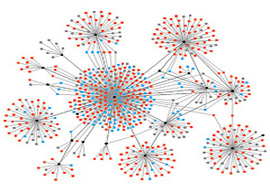
May 24, 2011

According to reviewers, Jennifer Egan’s novel A Visit From the Goon Squad is “virtuosic,” “shape shifting,” “startlingly new,” and it “turns the novel on its head.” According to me, it is “not bad,” “readable”; it tells stories and provokes emotions; it is, as they say, “well-crafted.” I will only pick on it because it drew attention to itself by climbing up the best-seller list and winning the Pulitzer Prize.
What really seemed to get the critics ooh-ing and aah-ing was “the nonlinear thing,” the “formal experimentation.” The book jumps around in time and uses different styles and points of view. That approach was novel when James Joyce did it. A hundred years later, it’s a bit of a novelty act.
A Visit From the Goon Squad contains sections in the first person, sections in the third, a section that is a pastiche of a celebrity profile, and one that is a PowerPoint presentation. You can call them brilliantly interlocked short stories and rave at the clever construction, or you can call them chapters and look at what they contain.
What they contain is the usual faddish blend of alienation, celebrity culture, a pinch of the old ultra-violence, and a sprinkling of semantic theory. (A chapter titled “Pure Language” contains such sentences as, “All we”ve got are metaphors, and they”re never exactly right. You can”t ever just Say. The. Thing.”) Then it’s all topped off with a touch of dystopia, and in lieu of ethics, a few spoonfuls of shame.
In Philip Roth’s latest novel Nemesis, shame still appears under its previous incarnation”guilt, which went out of style sometime after the 1940s, when the novel takes place. To know guilt you need to have some concept of good and bad; to know shame, only a high awareness of yourself and what others might be thinking of you.
The main character in Nemesis is Bucky Cantor, a high-school Phys Ed teacher. It is the summer of “44, and while every other able-bodied man is off at war, Bucky, exempted for poor eyesight, is guarding a playground in Newark. When a polio epidemic breaks out, the playground becomes a war zone, and his character is tested.
Roth’s Bucky Cantor feels guilt and it paralyzes him for life. Jennifer Egan’s character Bennie Salazar is successful in life but full of shame”shame for having mispronounced a word at an awards ceremony, shame in front of a hairdresser for the lice in his son’s hair. He even makes a list of his most embarrassing moments and reads it over to feel the burn again and so assure himself that he is alive. In search of that same reassurance, his assistant Sasha steals random objects that she does not need, and kids in a punk club ponder the importance of scenester gossip:
Knowing all this makes us one step closer to being real, but not completely. When does a fake Mohawk become a real Mohawk? Who decides? How do you know if it’s happened?